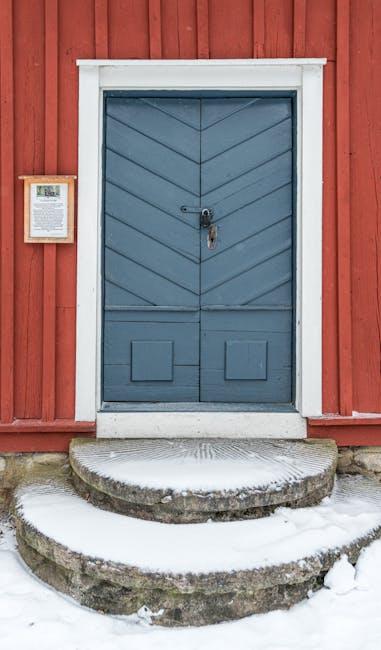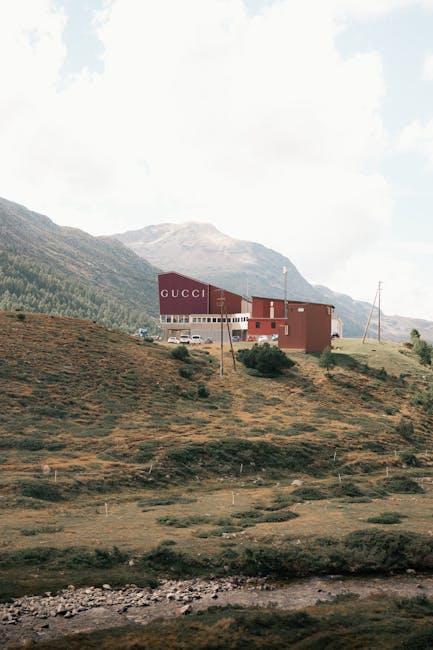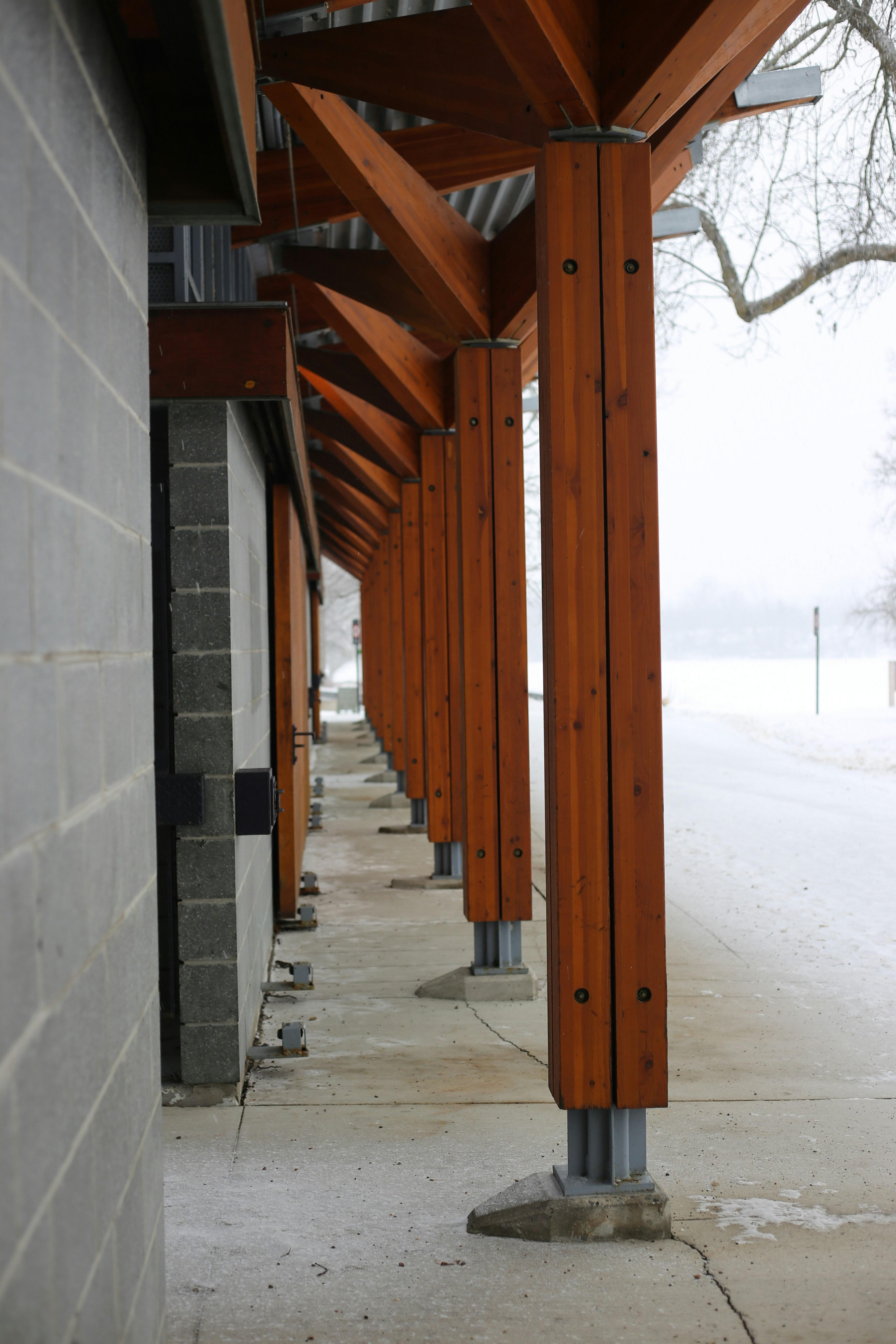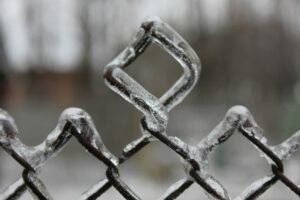When winter wraps the world in a blanket of snow and ice, the challenges of everyday life often multiply-especially when it comes to securing your home. Frost can freeze locks shut, and icy conditions can make even the simplest task of unlocking your door a frustrating ordeal. Choosing the right exterior locks designed to withstand harsh winter weather is essential not only for security but for convenience and peace of mind. In this article, we explore the best exterior locks built to brave snow and ice conditions, helping you stay safe and secure no matter how cold it gets outside.
Table of Contents
- Choosing Durable Locks That Withstand Freezing Temperatures
- Materials and Coatings That Resist Corrosion and Ice Build Up
- Key Features to Look for in Snow and Ice Resistant Locks
- Top Recommended Locks for Harsh Winter Environments
- Maintenance Tips to Keep Exterior Locks Functional in Cold Weather
- Q&A
- In Conclusion

Choosing Durable Locks That Withstand Freezing Temperatures
When selecting locks that endure bitter cold, it’s vital to focus on materials and mechanisms engineered for resilience. Stainless steel and brass are preferred metals for their rust resistance and ability to maintain integrity under freezing stress. Look for locks with sealed keyways that prevent moisture from entering, reducing the risk of ice formation inside the cylinder. This extra protection ensures that your lock will function smoothly without sticking, even when temperatures plunge below freezing.
In addition to materials, the lock’s design plays a crucial role in performance during winter. Opt for locks that feature weather-resistant finishes and have built-in anti-freezing technology, such as self-lubricating cylinders or internal heaters. Consider the benefits of keyless entry options as well, since electronic locks with insulated casings can eliminate the common issue of frozen keys altogether. Below is a comparison of popular lock types suited for icy environments:
| Lock Type | Material | Freezing Resistance | Maintenance |
|---|---|---|---|
| Stainless Steel Deadbolt | Stainless Steel | High | Low |
| Brass Padlock | Brass | Medium | Medium |
| Electronic Keyless | Various, insulated | Very High | Low |
| Standard Alloy Lock | Alloy | Low | High |

Materials and Coatings That Resist Corrosion and Ice Build Up
Choosing the right lock means prioritizing materials engineered to brave the ruthless cold and relentless moisture. Stainless steel often leads the pack, renowned for its inherent resistance to rust and corrosion under wet conditions. Meanwhile, locks crafted from brass or aluminum alloys offer a lighter yet durable alternative, often combined with advanced sealants that fend off not only rust but also ice infiltration. This is vital since trapped moisture can freeze and compromise lock mechanisms during icy spells.
Beyond base materials, specialized coatings play a critical role. Powder coating provides a robust, weather-resistant finish with excellent adhesion, enhancing protection against scratches that expose metal surfaces. Similarly, fluoropolymer coatings create ultra-slick surfaces, minimizing ice buildup and allowing for smoother operation even after a harsh frost. Below is a quick comparison of common lock materials and their anti-corrosion and ice-resistant properties:
| Material | Corrosion Resistance | Ice Buildup Resistance | Weight |
|---|---|---|---|
| Stainless Steel | High | Moderate | Heavy |
| Brass | Moderate | Moderate | Medium |
| Aluminum Alloy | Moderate | Low | Light |
| Powder Coated Metal | Very High | High | Varies |
| Fluoropolymer Coated | High | Very High | Varies |

Key Features to Look for in Snow and Ice Resistant Locks
When selecting a lock capable of withstanding harsh winter conditions, prioritize materials and mechanisms designed for resilience. Weatherproof coatings such as zinc or stainless steel prevent rust and corrosion, essential for locks constantly exposed to moisture. Look for models with sealed keyways or covers that keep out snow, ice, and debris, ensuring smooth operation no matter the temperature. Additionally, consider locks outfitted with anti-freeze lubricants pre-applied or compatible with cold-weather maintenance products, which reduce the risk of freezing and jamming during frigid days.
Beyond material durability, convenience and security features tailored to cold climates are paramount. Opt for locks that offer easy-to-grip knobs or levers to accommodate users wearing gloves. Some locks come equipped with heated cylinders that deter ice buildup, while others integrate smart technology allowing remote access, reducing the need to fiddle with frozen keys. Below is a quick reference table outlining the ideal attributes for winter-proof locking mechanisms:
| Feature | Benefit |
|---|---|
| Corrosion-resistant materials | Prevents rust and extends lifespan |
| Sealed keyway or protective cover | Keeps out snow and ice build-up |
| Anti-freeze lubricant compatibility | Ensures smooth locking action in cold |
| Glove-friendly design | Easy handling without removing gloves |
| Smart lock integration | Remote access minimizes freezing risk |

Top Recommended Locks for Harsh Winter Environments
When selecting locks for winter, durability and resistance to freezing temperatures are paramount. Look for models crafted from rustproof materials like stainless steel or brass, which withstand moisture and prevent corrosion. Weather-resistant coatings, such as powder coatings, add an extra layer of protection against snow and ice accumulation. Additionally, locks with sealed keyways help prevent dirt, ice, and debris from clogging the mechanism, ensuring consistent performance even during heavy snowfall.
Here are some features to prioritize when shopping:
- Freeze-resistant cylinders that function smoothly below freezing points
- Protective covers or caps to shield internal components from ice
- Easy-to-lubricate mechanisms for consistent unlocking in cold weather
- Extra-large keys for easier handling with gloves
| Lock Type | Winter Benefit | Top Material |
|---|---|---|
| Deadbolt | Strong security with sealed design | Brass/Stainless Steel |
| Padlock | Portable with weatherproof sheath | Hardened Steel |
| Keyless Entry | No freezing keys, electronic access | Plastic & Metal Hybrid |

Maintenance Tips to Keep Exterior Locks Functional in Cold Weather
To ensure your exterior locks withstand the harsh embrace of winter, routine care is essential. Start by lubricating the lock mechanisms regularly with a graphite-based lubricant, which prevents the internal components from freezing and sticking. Avoid oil-based products, as they can thicken in cold weather and cause more harm than good. Additionally, wiping down locks after snowfall or rain helps prevent moisture buildup that leads to rust and corrosion. Keep an eye on weather stripping around your doors-it acts as a barrier, minimizing icy drafts and reducing direct exposure of the lock to wet conditions.
Simple preventive actions can dramatically extend the life and functionality of your locks during freezing conditions. Consider installing protective covers or shields to block ice and snow accumulation directly on the hardware. When temperatures drop, gently warming frozen locks with a hairdryer or warm compress can safely thaw mechanisms without damage. Here are some key reminders to keep your locks operational all winter:
- Use weatherproof lock covers to shield from snow and ice.
- Lubricate locks monthly using cold-weather-compatible graphite sprays.
- Remove snow and ice build-up promptly after storms to prevent moisture ingress.
- Test locks periodically to catch freezing issues before they worsen.
- Consider upgrading to locks specifically designed for extreme cold climates.
| Maintenance Task | Frequency | Benefit |
|---|---|---|
| Lubrication with graphite | Monthly | Prevents freezing and rust |
| Clearing snow/ice | After storms | Avoids moisture damage |
| Inspecting weather stripping | Seasonally | Reduces moisture exposure |
| Applying protective covers | Before winter | Shields lock from cold elements |
Q&A
Q&A: Best Exterior Locks for Snow and Ice Conditions
Q1: Why do standard locks struggle in snow and ice?
A1: Most standard locks aren’t designed for extreme cold or moisture. Snow and ice can freeze the lock mechanism or cause rust and corrosion, making it hard to turn the key or use a keypad. Moisture trapped inside can expand and crack components, leading to failure.
Q2: What features should I look for in a lock suited for snowy, icy climates?
A2: Look for weather-resistant materials like stainless steel or brass, which resist rust. Locks with built-in heaters or weatherproof covers help prevent ice buildup. Sealed keyways and lubricated cylinders reduce moisture entry. Additionally, locks with frostproof designs ensure smooth operation despite freezing temperatures.
Q3: Are electronic or smart locks reliable in snow and freezing conditions?
A3: Many smart locks are made with rugged weatherproofing, but they vary widely. Models rated for outdoor use and cold climates often have temperature-resistant batteries and protective casings. However, prolonged exposure to extreme cold can shorten battery life and affect electronic components, so choosing models tested for such environments is crucial.
Q4: Can I use any type of lubricant to prevent locks from freezing?
A4: No, avoid using water-based or oil-based lubricants that can attract dirt or freeze inside the lock. Instead, use graphite powder or silicone-based lubricants designed for locks, as they help keep mechanisms moving smoothly without freezing or gumming up.
Q5: What are some top recommended lock types for snowy and icy conditions?
A5: Frostproof deadbolts and padlocks with weatherproof hoods or covers, heavy-duty stainless steel smart locks with weather ratings, and insulated keyless entry systems top the list. Brands like Medeco, Schlage, and Abloy offer models specifically engineered to withstand harsh winter climates.
Q6: How can I maintain my exterior locks during winter for best performance?
A6: Regularly clean locks to remove dirt and debris, apply appropriate lubricant before the coldest months, use lock covers or protective hoods, and test locks periodically to ensure they operate smoothly. Also, if you notice moisture inside, try warming the lock gently with a hairdryer to melt ice buildup.
Q7: Are keypad or fingerprint locks better than traditional key locks in icy conditions?
A7: Keyless locks eliminate the need to insert a key, reducing the risk of keys freezing inside. However, fingerprint scanners may struggle if covered with frost or snow. Keypad locks are often reliable if designed to repel moisture, but extreme cold can still affect battery performance. Choose models with proven cold-weather reliability.
This Q&A offers a comprehensive guide for anyone seeking reliable locking solutions when winter’s chill turns locks into icy foes.
In Conclusion
As winter’s chill settles in and icy winds begin to blow, choosing the right exterior lock becomes more than just a matter of security-it’s about resilience and reliability in the harshest conditions. The best locks for snow and ice don’t just guard your property; they stand firm against nature’s frozen challenges, providing peace of mind when you need it most. Whether you’re securing a cozy cabin or your everyday home, investing in a lock designed to withstand winter’s bite ensures that cold months won’t compromise your safety. So, as you prepare to face the season, let your choice of lock be a fortress against frost, turning even the iciest days into a moment of secure confidence.





